After months of leaks, rumours, and speculation, the Samsung Galaxy Watch 4 and Watch 4 Classic are officially here — and that means so is a new smartwatch platform for Android.
While there weren’t too many surprises going into today’s Unpacked event, folks, so far it’s looking like Android fans might finally get the smartwatches they’ve been asking for since Wear OS debuted in 2014.
The Design You Know, Plus a Powerful New Processor
Visually speaking, the Galaxy Watch 4 and Watch 4 Classic aren’t rocking the boat. They look like tweaked versions of their predecessors, the Galaxy Watch Active 2 and the Galaxy Watch 3. (For clarity, Samsung has also updated the branding so that its previous Active line is now the Galaxy Watch, while the premium Galaxy Watch line is now dubbed the Classic.) The Watch 4 comes in both 40mm and 44mm sizes, while the Classic is slightly larger at 42mm and 46mm. The former retains the Active’s digital bezel, while the Classic sports Samsung’s iconic physical rotating bezel.
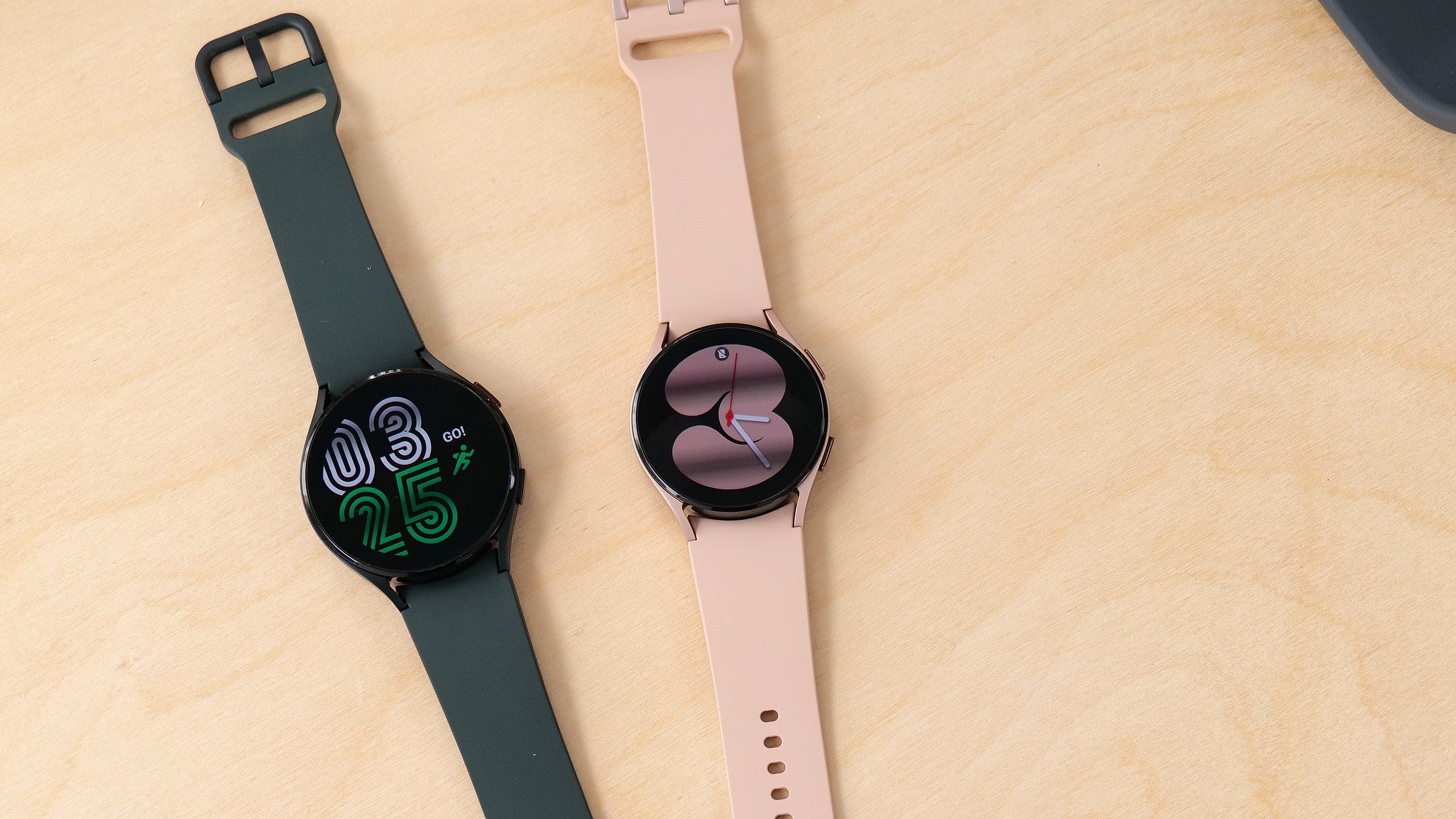
I got to spend some time with the watches at a Samsung event, and all four look snazzy on the wrist. While I was sceptical of the design based on renders, in person they’re much sleeker and the integrated lugs do look nice when you’re wearing the devices. The screen is gorgeous — enough said. The straps are also interchangeable, in case you want a leather band with the Watch 4 and a silicone option for the Classic. Overall I found the 40mm Galaxy Watch 4 and 42mm Classic didn’t overpower my wrists, but I’ll have to do further testing to see how they hold up.
More important are the upgrades under the hood. First off, these babies are packing the new Exynos W920, which Samsung says is the industry’s first 5nm wearable chip. This is a huge deal for Wear OS smartwatches, as up until now they’ve been tottering along on Qualcomm’s ancient 28nm Snapdragon Wear chips. Samsung says this translates to a 20% faster CPU, 50% more RAM, and a GPU that’s 10 times faster than its previous chip. That also makes these the beefiest Wear OS watches you can get right now, with 1.5GB of RAM and 16GB of storage. All this extra processing power is immediately noticeable. Animations are smooth, apps launch quickly, and scrolling through your widgets is a breeze. I didn’t get to try the watches’ LTE connectivity, but you do have that option for each watch.
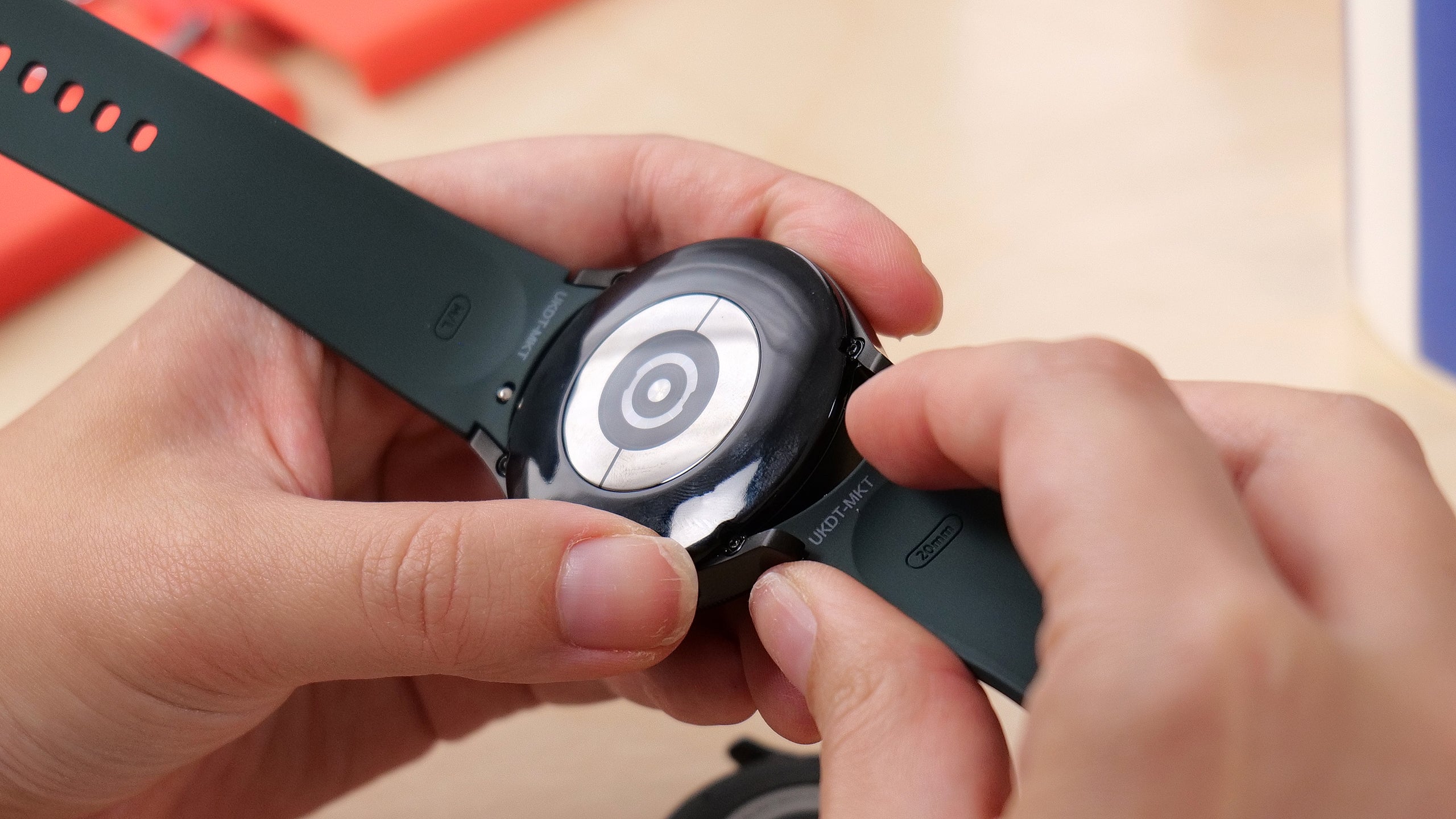
Both watches get roughly 40 hours of battery life on a single charge — which is roughly on par with the Watch 3. Charging for 30 minutes will also get you an estimated 10 hours of battery life.
A New 3-in-1 Sensor That Can Measure Body Composition
The other big hardware upgrade is the BioActive Sensor, a 3-in-1 chip that enables optical heart rate-monitoring, ECGs, and bioelectrical impedance analysis for body composition. Samsung says the sensor fits into a more compact design without sacrificing accuracy. I can’t say whether that bears out for activity-tracking or ECGs just yet, but heart rate seemed on par with my Apple Watch SE.
The new sensor enables a new body composition feature, which takes about 15 seconds to break down your muscle mass, body fat and body water percentage, and basal metabolic rate. The units I saw weren’t running final software, so I won’t comment on this feature’s accuracy just yet. That said, it’s a bit awkward to measure body composition if you wear your watch on your right wrist. You have to place your middle and ring finger on each of the two buttons, and then extend your arms out in front of you. Hopefully, there’s a way to switch screen orientation, but I didn’t get to set up the watches myself.
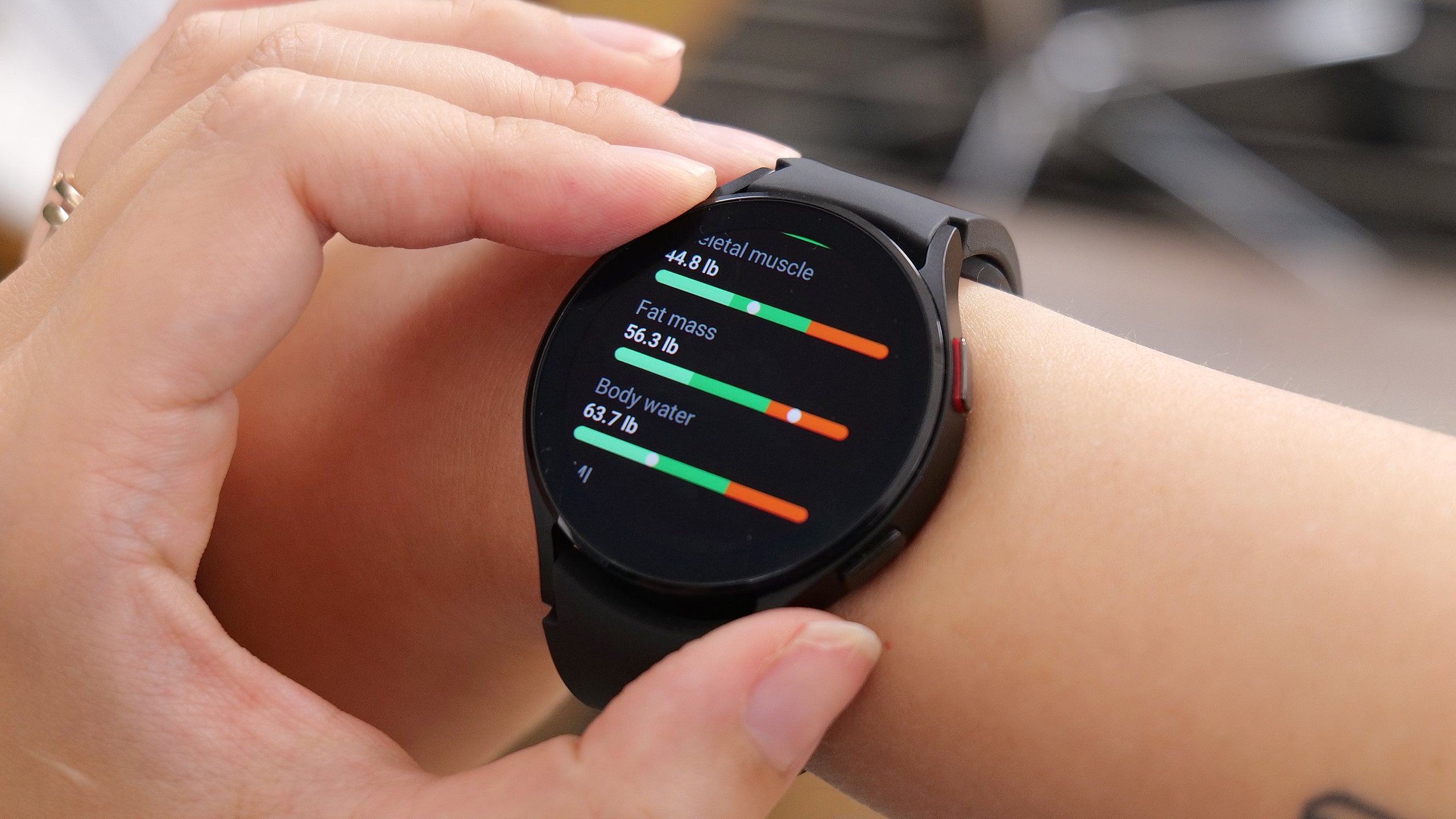
A quick note: Like other gadgets with BIA sensors, this feature isn’t recommended for anyone with an implanted device like a pacemaker.
Also new this time around is snoring detection and more in-depth sleep-tracking. Otherwise, you get the typical sensor array: built-in GPS, accelerometer, barometer, gyroscope, light sensor, as well as a geomagnetic sensor. NFC payments are also supported, as is Bluetooth 5.0 and wifi.
But What About the New Wear OS?
First off, the Wear OS running on the Galaxy Watch 4 and Watch 4 Classic is “Wear OS Powered by Samsung.” The Wear OS that will come to other watches next year is Wear OS 3. Ultimately, all that means is the Wear OS running on these smartwatches has a bit more Samsung flavour.
Most of that is the One UI Watch experience Samsung detailed earlier this year at Mobile World Congress. The gist is that when paired with a Galaxy smartphone, Samsung’s watches will automatically download apps from your phone, sync important settings, and switch audio between different Samsung devices. This is more of a passive feature, however, and I didn’t really get a chance to see it in action first-hand.
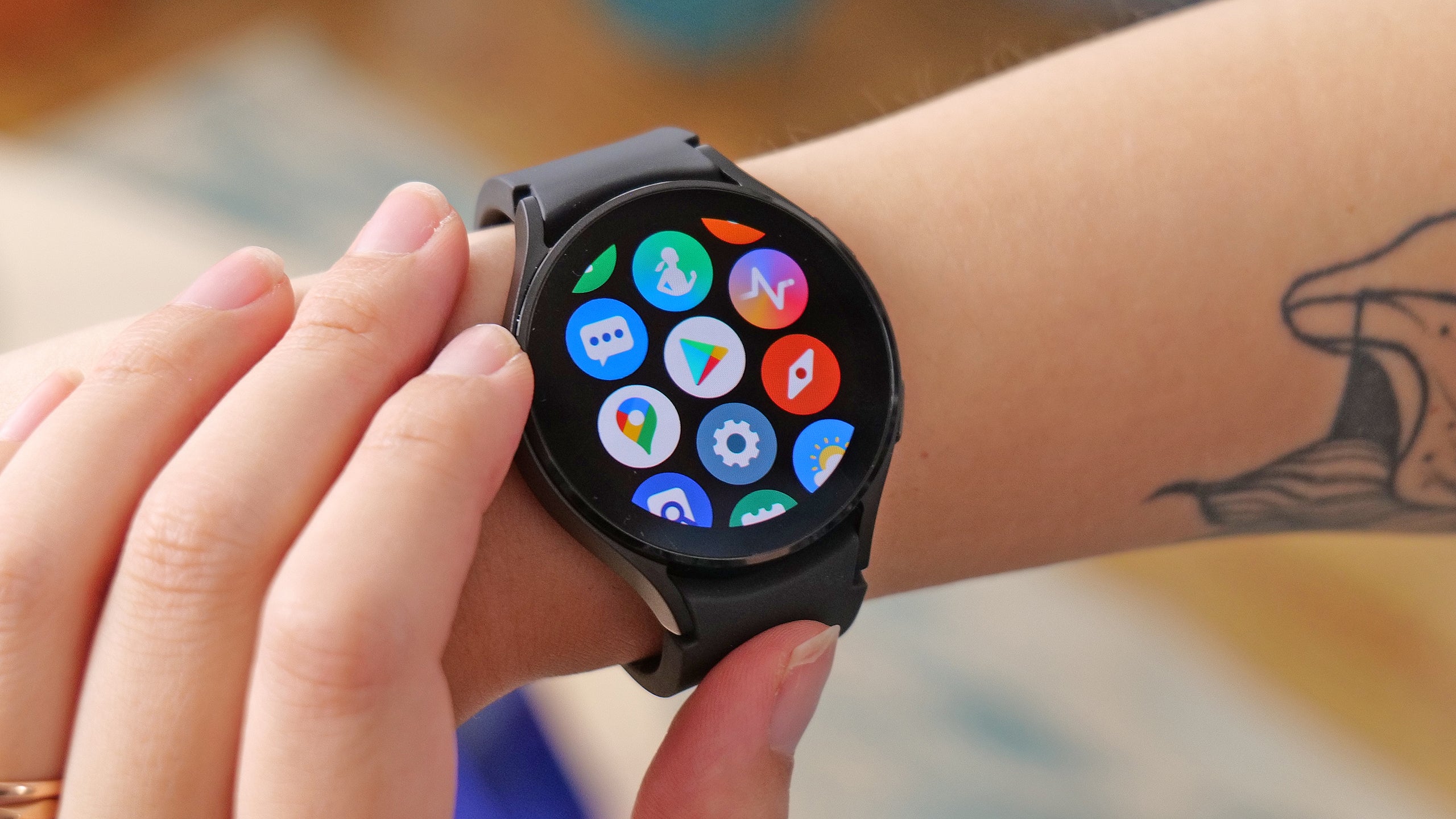
Wear OS Powered by Samsung takes a little getting used to. It truly is a mish-mash of Tizen and Wear OS, which means at times you have to re-learn how to use it. For example, swiping up doesn’t get you notifications like with current Wear OS watches. Instead, it brings you to an Apple-like app grid that can be edited either on your wrist or on the phone. It’s a neat improvement from Tizen’s circular app menu. Swiping left still lets you scroll through your widgets, but they look a lot more like what you’d find on a Tizen watch than previous Wear OS watches.
The Samsung Health app has also gotten a refresh. The app itself looks much cleaner, is easier to navigate, and presents metrics in a more straightforward way. There’s also a new dedicated tab for guided workouts, which you can stream to Samsung TVs with real-time metrics from your watch.
It’s not all Samsung though. Google also said today that the apps would reflect the new Material You design language for Google Maps, Messages by Google, Google Pay apps, and YouTube Music, whenever that launches later this year. And as promised at Google I/O, there’ll be more third-party apps and Tiles, including Calm, Komoot, MyFitnessPal, Period Tracker, Sleep Cycle, Spotify, Strava, and Adidas Running. (Everything but Google Maps will also be coming in the next few weeks to Wear OS 2.)
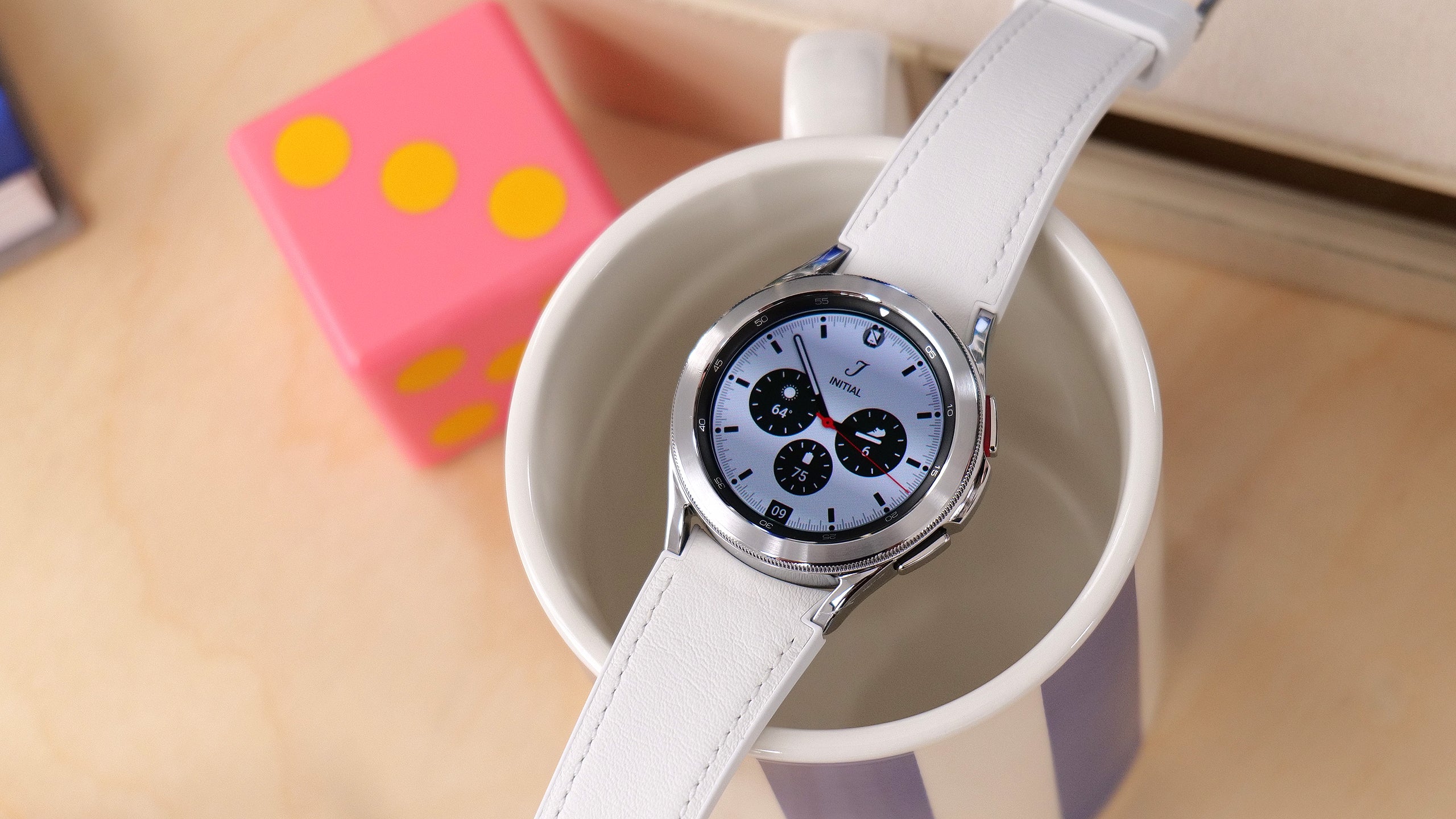
The big thing to note from Google’s announcement is it explicitly states you can download Google’s apps onto Samsung’s watches. That hasn’t been the case in the past. Samsung also confirmed that users will have the option of choosing which company’s service they want to use. So, if you prefer Google Maps, Messages by Google, Google Pay, or are a YouTube Music subscriber, you don’t have to use Samsung’s preloaded apps. We’ll have to see how it works in real-life use, but hey, at least we know that the forthcoming YouTube Music app will support offline downloads.
Futzing with a few features and menu screens is far from a comprehensive test of the new Wear OS. I can’t deliver a final verdict on that alone. However, what I saw and experienced so far is extremely promising. We’ll have a more in-depth review soon, so stay tuned.
Pricing and Availability
Both watches are available for pre-order starting today and are expected to ship on September 10 in Australia.
The Galaxy Watch 4 starts at $399, with the LTE version costing $499. The 40mm version will be available in black, silver, and pink gold. The 44mm version is available in black, silver, and green.
The Galaxy Watch 4 Classic is $549 for Bluetooth only and $649 for LTE. You’re a little more limited in terms of colours, however. At launch, the watch will come in black and silver. If you’re willing to wait until September, however, you can also opt for a rhodium-plated Thom Browne limited edition.
